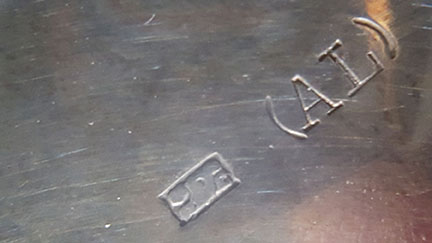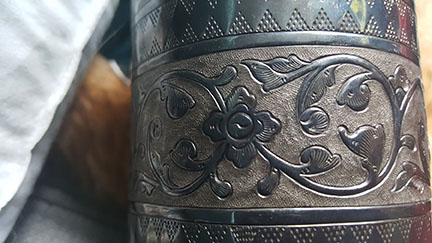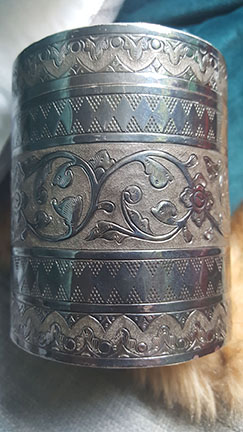
|
Subject:Brunei Silver Canister - Unknown Marks
Posted By: PD Props Sun, Jul 10, 2016 IP: 24.212.205.144
It has taken a few months, but I have finally identified the country of origin for this little gem.
The bottom of the canister is marked with "(AL)" parenthesis included, with another symbol in a rectangle.
The example I found is marked "AH SG" and appears to be later than mine (the seller says early to mid 20th CE, it also lacks the secondary mark of what appears to be two figures embracing (although it could be any number of other things).
The motif is known as bunga air mulih meaning "flower water plant" which grow around kampung ayer (water villages).
I have tried contacting the Brunei Ministry of Crafts, but they don't seem to have an email. The Brunei National Museum website seems to have been shut down, and Google only lists a telephone number (unfortunately, I don't quite know enough Bahasa Malay to hold anything beyond a very basic conversation, and only if they want to talk about food or buses). Brunei does have an embassy here in Canada, but they've not responded to my email yet.
Hoping some of you amazing silver enthusiasts might be able to shed some more light.
With every best wish,



Link :Brunei Silver Canister - Lg versions


|
 Brunei Silver Canister - Unknown Marks
Brunei Silver Canister - Unknown Marks  ( South & SE Asia ) - PD Props - Jul 10, 2016 (03:25 PM)
( South & SE Asia ) - PD Props - Jul 10, 2016 (03:25 PM)  Re: Brunei Silver Canister - Unknown Marks
Re: Brunei Silver Canister - Unknown Marks  - Bill H - Jul 21, 2016 (02:51 AM)
- Bill H - Jul 21, 2016 (02:51 AM)